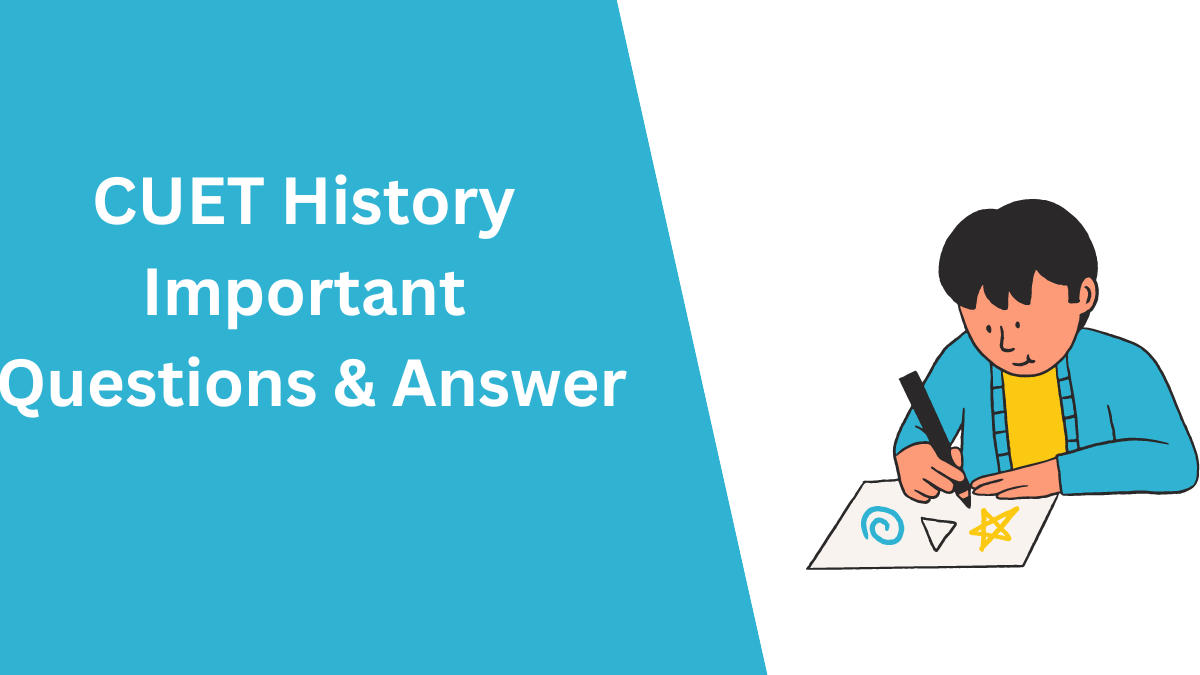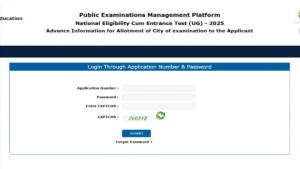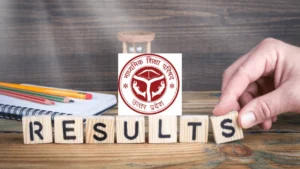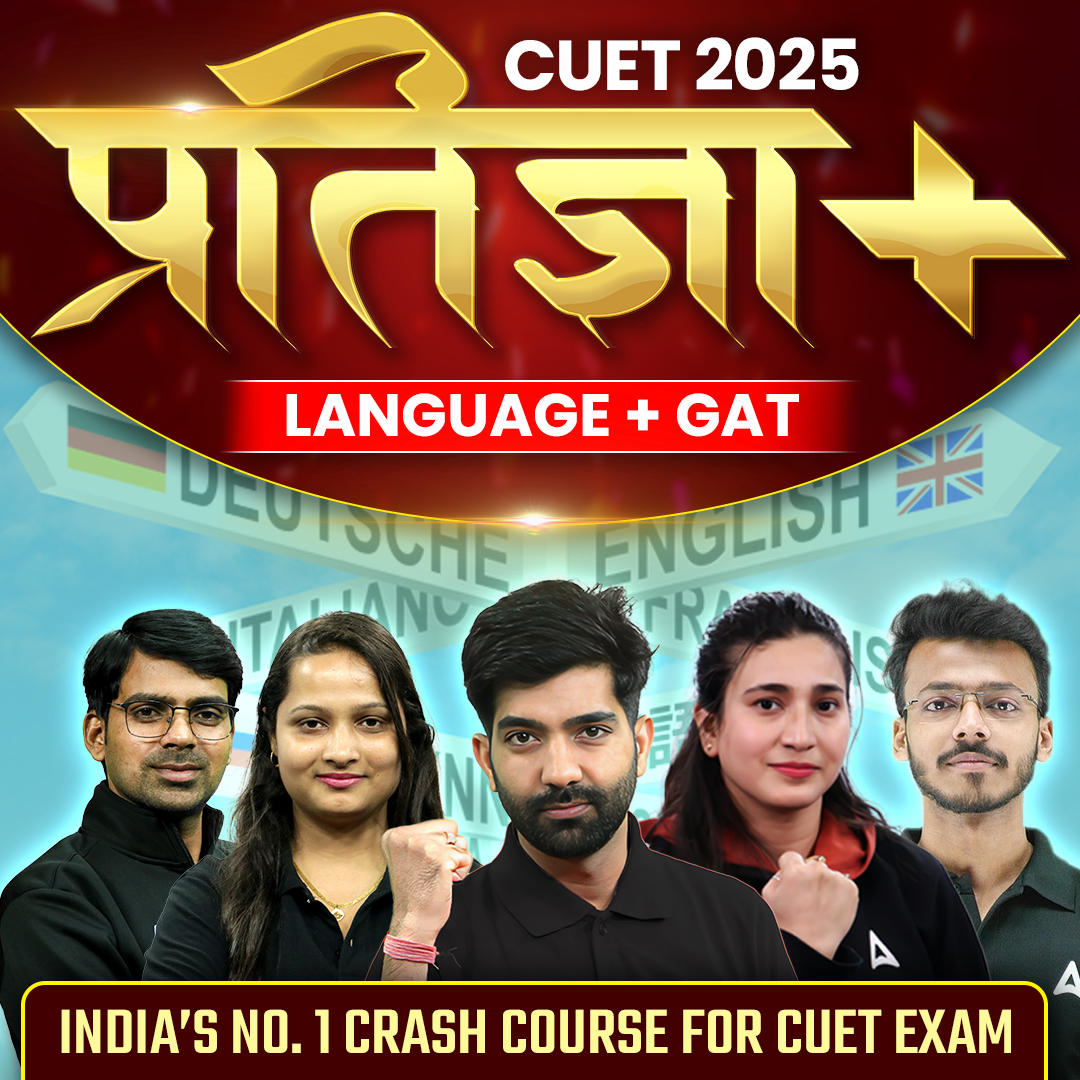Table of Contents
History is one of the CUET subjects. It comprises historical events, as well as their collecting, organization, and interpretation. Political, economic, Harappan archaeology, social histories utilizing the Mahabharata, religious histories, Buddhism history, medieval culture through traveler’s accounts, and other major issues are covered in the subject. We provide the CUET (History) Exam. Questions and answers with full solutions are provided for free.
CUET Exam Asked History Important Questions
Before looking to the CUET History Important Questions with Answers, you must go though the topics and subtopics included in the syllabus. The following is the whole CUET History syllabus, which includes all of the essential topics:
| CUET UG History Important Topics | |
| Social Histories using the Mahabharata | Colonialism and Rural Society: Evidence from Official Reports |
| The Story of the First Cities Harappan Archaeology | Medieval society through Travellers’ Accounts |
| Political and Economic History: How Inscriptions tell a story | Representations of 1857 |
| New Architecture: Hampi | Mahatma Gandhi through Contemporary Eyes |
| Agrarian relations: The Ain-i-Akbari | Partition through Oral Sources |
| The Mughal Court: Reconstructing History through Chronicles | Colonialism and Indian Towns: Town Plans and Municipal Reports |
| A History of Buddhism: Sanchi Stupa | The Making of the Constitution |
| Religious Histories: The Bhakti-Sufi tradition | |
CUET UG History Important Questions with Answers
Topic-Bricks, Beads & Bone
Q1. The Harappan Civilisation called “Harappan Culture” due to ?
(a) Group of object found in distinct geographical area
(b) It found only in the Indian Parts of area
(c) A river comes from Harappa
(d) None of the above
Q2. Indus Valley Civilisation called “Harappan Civilisation”, Why?
(a) Harappans was most intelligent
(b) Harappan was 1st site discover with unique culture
(c) Harappan was more rich among all city
(d) All of the above
Q3. Which of the following was known as Early Harappan Site
(a) Harappa
(b) Mohenajodaro
(c) Siswal
(d) None of the above
Q4. Which of the following was known as the Mature Harappan Site ?
(a) Amri Nal
(b) Siswal
(c) Ganweriwala
(d) Dumb Sadat
Q5. Which of the following Harappan sites, the evidence of “Millet” found from?
(a) Manda
(b) Gujarat
(c) Alamgirpur
(d) None of the above
Q6. Which of the following sites is the largest sites in India
(a) Harappa
(b) Mohenajodaro
(c) Rakhigarhi
(d) Kalibangan
Q7. Where was the lower town situated
(a) West side
(b) East side
(c) North side
(d) South side
Q8. Where was the Citadel situated
(a) West Side
(b) East Side
(c) South Side
(d) North side
Sol:
The Citadel or Higher town was situated on the east side in the Indus Valley Civilization & The Archaeologist was found as the small city with citadel, where king and other priests lived.
Q9. Who was called Father of Indian Archaeology ?
(a) Lord Canning
(b) Lord Lyton
(c) Lord Dalhausie
(d) Alexandra Cunningham
Q10. The people of Harappan brought gold from ?
(a) Afghanistan
(b) Rajasthan
(c) Karnataka
(d) Mesopotamia
Solution
S1.Ans: (a)
Sol:
The Indus Valley Civilisation is also called the “harappan Culture” because the Archaeologists used the term “Culture” for a group object, distinctive in-style & found within the specific geographical area.
S2.Ans: (b)
Sol:
Indian Valley Civilisation also called “Harappan Civilisation” because the Harappan site was the first site to be discovered with unique culture by Indian Archaeologist Daya Ram Sahni in 1920 AD.
S3.Ans: (c)
Sol:
Indian Valley Civilisation was classified into three categories:
(i). Early Harappans
(ii). Mature Harappans
(iii). Later Harappans
In Early Harappan, The Site was found like Siswal, Kot Diji, Damb Sadat, & Amri Nal.
S4.Ans: ©
Sol:
The mature Harappan, The site was found like Kalibangan, Maithal, Ganweriwala, Rakhigarhi, Suktazendor, Nageshwar, Lothal & Rangpur.
S5.Ans: (b)
Sol:
Some evidence of grains were found in the Harappa Civilisation include Wheat, Barley & Chickpea. Millets also were found from the site Lothal in Gujarat.
S6.Ans: ©
Sol:
Among the sites of Harappan Civilisation, The largest site are Harappan & Mohenajodaro but Rakhigarhi was the largest site of Harappan civilisation in the Indian territory.
S7.Ans: (b)
Sol:
The lower town was situated on the east side in Indus Valley Civilization & the Archaeologist was found as the largest as well as walled city with several buildings built on the platform as foundation of building.
S8.Ans: (a)
Sol:
The Citadel or Higher town was situated on the east side in the Indus Valley Civilization & The Archaeologist was found as the small city with citadel, where king and other priests lived.
S9.Ans:(d)
The Father of Indian Archaeology was called Alexandra Cunningham.
S10.Ans:(c)
The people of Harappan brought Gold from Karnataka in south India.
Topic-Kings, Farmer & Town
Q1. Who deciphered “Brahmi” & “Kharosthi” scripts ?
(a) James Prinscep
(b) Lord Dalhausie
(c) Lord Armhnest
(d) None of the above
Q2. What is “Inscription” ?
(a) Epigraphy
(b) Writing engraved on the hard surface
(c) Reading from source
(d) All of the above
Q 3. Which of the following centuries “Mahajanapadas” came to existence ?
(a) 400 BCE
(b) 600 BCE
(c) 100 BCE
(d) 300 BCE
Q4. What is the meaning of “Janapadas” ?
(a) King house
(b) Queen House
(c) Land where of peoples was settled
(d) None of the above
Q5. What is the meaning of the word “Oligarchy” ?
(a) Rich Peasants
(b) Power is exercised by the group of men
(c) The Priests
(d) None of the above
Q 6. Which among the following locations where “Gautama Buddha” & “ Vardhamana Mahaveer” died respectively ?
(a) Lumbini & Vaishali
(b) Sarnath & Champa
(c) Mithila & koshala
(d) Kushinagara & Pawapuri
Q7. Who was the first ruler to inscribe his message on a stone surface ?
(a) Chandra Gupta Maurya
(b) Bindusara
(c) Dhananada
(d) Ashoka The Great
Q8. Which of the following “Mahajanapadas” had more than one political center ?
(a) Vatsya
(b) Kuru
(c) Avati
(d) Magadha
Q9. Who wrote “Arthashastra” ?
(a) Jamini
(b) Heliodorus
(c) Nagsen
(d) Vishnugupta
Q10. Who composed “Prayag Prashasti” ?
(a) Nagasena
(b) Banabhatta
(c) Harisena
(d) Chanakya
Solution
S1.Ans: (a)
Sol:
The important developments in Indian epigraphy took place in the 1830 AD. When James Prinsep, an East India Company officer deciphered the “Brahmi” & “Kharosthi” scripts.
S2.Ans: (b)
Sol:
The word “inscription” is the writing engraved on the hard surface such as stone, metal or pottery.
S3. Ans (b).
Sol:
The Mahajanapadas came to existence in 600 BCE. There were a total of sixteen Mahajanapadas but only Six Mahajanapadas were much powerful.
- Magadha
- Lichchavi
- Anga.
- Avanti
- vatsya
- Koshala
- Ghandhara
S4.Ans: (c)
Sol:
The word “ Janapadas” came from the word “ Jana” which means the land of people or tribes settled.
S5.Ans: (b)
Sol:
The word “Oligarchy” refers to a form of government where the power is exercised by the group of men.
S6.Ans: (d)
Sol:
Lord Gautama Buddha died at Kusinara or modern day Kushinagar in Uttar Pradesh & Lord Vardhamana Mahaveer died at Pawapuri in Bihar.
S7.Ans: (d)
Sol:
Ashoka The Great was the first ruler who inscribed his message on the stone surface. These stones were polished pillars as well as natural rocks.
S8.Ans: (d)
Sol:
The Magadha mahajanapadas had more than one political center. Chandar Gupta Murya was founder of the great Mauryan Empire & Ashoka was a very important king. During the Ashoka reign, The major political center was established in Patliputra, Ujjain, Taxila, Tosali & Suvarnagiri.
S9.Ans:(d)
Sol:
The important book “ Arthashastra” was written by Vishnugupta. Kautilya or Vishnugupta or Chankya was a prime minister during the Chandra Gupta Maurya reign & he was a professor of Taxila University during the King Dhananand of Nanda dynasty.
S10.Ans:(c)
Sol:
The Prayag Prashasti was composed in the Sanskrit language by poet Harisena. He was court poet during king Samudragupta of Gupta dynasty.
Topic-Kinghships, Caste & Class
Q1. What does patriliny means ?
(a) From father side
(b) From mother side
(c) From Uncle side
(d) None of the above
Q2. The “Pandavas” & “kauravas” were ?
(a) Brother
(b) Uncle
(c) Cousins
(d) None of the above
Q3. Which of the following is an early Vedic book ?
(a) Sama Veda
(b) Atharva Veda
(c) Yajur Veda
(d) Rig Veda
Q4. What does the word “Endogamy” mean ?
(a) Women having several husband
(b) Men having several wives
(c) Marriage outside the Kins
(d) Marriage within the group
Q5. Arrange the orders ?
(a) Brahamana, Shudras, Kshatriya, Vaishay
(b) Brahamana, kshatriya, Shudras, Vaishay
(c) Brahamana, Kshatriya, Vaishaya, Shudras
(d) Kshatriya, Vaishaya, Brahamana, Shudras
Q6. The book “Sutta Pitaka” belongs to ?
(a) Hinduism
(b) Islam
(c) Jainism
(d) Buddhism
Q7. What does “Didactic” mean ?
(a) Purpose of Instruction
(b) Purpose of Stories
(c) Purpose of House
(d) None of the above
Q8. What does “ Sutas” means
(a) Kings
(b) Minister
(c) Lawyer
(d) Authors
Q9. Where was the Kuru kingdom situated ?
(a) Ganga doab
(b) Krishna Doab
(c) Narmada Doab
(d) All of the above
Q10. Draupadi was princess of ?
(a) Magadha
(b) Vajji
(c) Panchala
(d) Angha
Solution
S1. Ans(a)
Sol:
The term “Patriliny” means that the descent from father to son, grandson & son on.
S2. Ans (c)
Sol:
The Pandavas & Kauravas were groups of cousins & Fue over power & land in the Mahabharatas.
S3. Ans (d)
Sol:
The Vedic age was beginning from 1500 BCE & the early Vedic book was “Rig Veda” compiled about 1500 BCE. Later Vedic books called Sama Veda, Atharva Veda, Yajur Veda were compiled late 1000 BCE.
S4. Ans (d)
Sol:
Endogamy means a person’s marriage within the unit & it could be a group, caste or group of the same locality.
S5. Ans (c)
Sol:
Brahmanas were supposed to study & teach the Vedas, perform sacrifices & get sacrifices performed, give & receive gifts.
Kshatriyas were engaged in warfare, protecting people & administering justice.
Vaishyas were expected to engage in agriculture, pastoralism & trade.
Shudras were assigned only one occupation, that of serving the higher varnas.
S6. Ans (d)
Sol:
The book “Sutta Pitaka” belongs to Buddhism & found in a text suggesting that originally human beings did not have fully involved bodily forms nor was the world of plants fully developed.
S7. Ans(a)
Sol:
The word “Didactic” means Purpose of Instruction.
S8. Ans(d)
Sol:
The Sutas was a poet & author who composed a story about Kshatriya warrier & composed poems to celebrate their victory.
S9. Ans(a)
Sol:
The Kuru Kingdom was situated at Ganga doab near Meerut in modern day Uttar Pradesh.
S10. Ans(c)
Sol:
Drupadi was the daughter of Drupada, he was king of Panchala.
Topic-Thinker, Beliefs & Buildings
Q1. Why is Sanchi important ?
(a) Buddhist Monuments
(b) Jaisim Monuments
(c) Hinduism Monuments
(d) None of the Above
Q2. Who protected “Sanchi Stupas” during the 19th century ?
(a) The Marathas
(b) The Mughal
(c) The Nizam
(d) The Kingdom of Bhopal
Q3. Which of the following was related to the Buddhist book “ Vinay Pitaka” ?
(a) Rule & Regulation for Sanga & Monastic order
(b) Buddha Teaching
(c) Philosophy Matters
(d) None of the above
Q4. Which of the following was related to the Buddhist book “ Abhidhamma Pitaka”?
(a) Rules & Regulation for Sanga & Monastic Order
(b) Buddha Teaching
(c) Philosophy Matters
(d) None of the above
Q5. Which of the following centuries was “Vardhamana” known as Mahavira ?
(a) 400 BCE
(b) 600 BCE
(c) 321 BCE
(d) None of the above
Q6. What does the word “Hagiography” mean ?
(a) Biography of Saint
(b) Story of Saint
(c) Life Style of Saint
(d) All of the above
Q7. What does the word “Anicca” mean according to Buddha Philosophy ?
(a) Sorrow
(b) Anatta
(c) Anicca
(d) None of the above
Q8. What are the Three jewels of Buddha ?
(a) Buddha, Dhamma & Sangha,
(b) Buddha, Buddha & Buddha
(c) Sangha, Buddha & Sangha
(d) None of the above
Q9. Who was the first Bhikkhuni in Buddhism ?
(a) Mahapajapati Gomati
(b) Amrapali
(c) Queens of Magadha
(d) All of the above
Q10. What does the word “Chaitya” mean ?
(a) Residence of Bhikkhu
(b) Worship Place for Bhikkhu
(c) House for Bhikkhu
(d) None of the above
Solution
S1. Ans (a)
Sol:
Sanchi is important for Buddhist monuments & it is located in Madhya Pradesh.
S2. Ans (d)
Sol:
During the 19th century, The “Sanchi Stupas” was protected by the Shahjehan Begum from the Kingdom of Bhopal.
S3. Ans (a)
Sol:
The Buddhist book “Vinay Pitaka” dealt with rules & regulation for who joined the Sanga & monastic order.
S4. Ans(c)
Sol:
The Buddhist book “Abhidhamma Pitaka” dealt with Philosophical Matter for who joined the Sanga & monastic order. It was compiled in the 3rd assembly held in Patliputra by Mogaliputta Tissa.
S5. Ans (b)
Sol:
In the 600 BCE, The Vardhamana was known as Mahavira. He was 24 Tirthankara & he was born at Vaishali in Lichchavi Mahajanapadas.
S6. Ans (a)
Sol:
The word “Hagiography” means Biography of Saints or religious leaders.
S7. Ans(c)
Sol:
According to the Buddha Philosophy, The word “Anicca” means “Transient”.
S8. Ans (a)
Sol:
Three jewels of Buddha are “Buddha”, “Dhamma” & “Sangha”.
S9. Ans (a)
Sol:
The first Bhikkhuni was the mother of the Gatama Buddha named Mahapajapati Gomati.
S10. Ans(a).
Sol:
The word Chaitya was a worship place for Bhikkhu & built by kings at the Caves.




 NEET City Intimation Slip 2025 Out at ne...
NEET City Intimation Slip 2025 Out at ne...
 UP Board 10th Toppers List 2025, UPMSP M...
UP Board 10th Toppers List 2025, UPMSP M...
 UP Board 12th Result 2025 Out at www.upm...
UP Board 12th Result 2025 Out at www.upm...




